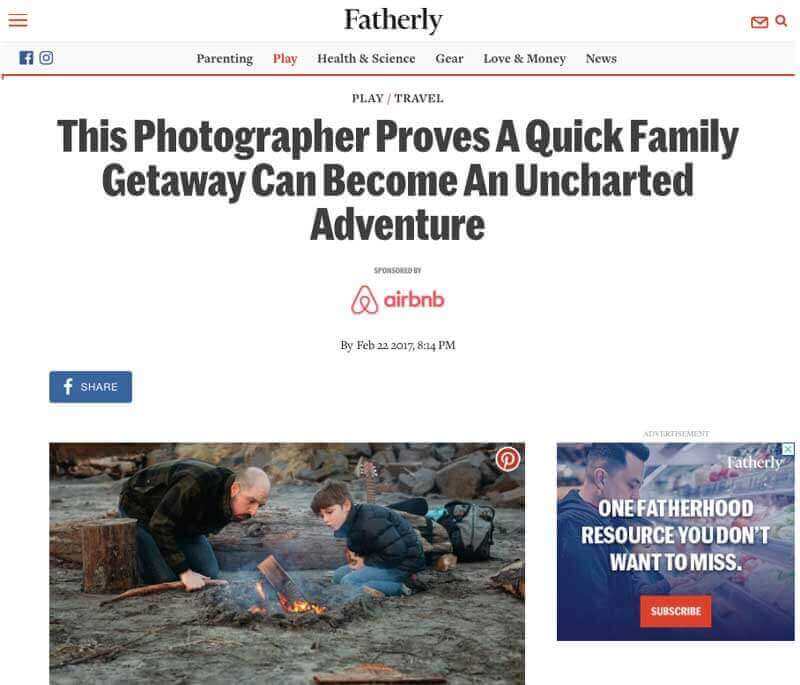Traditional publishers and print media companies have seen their profitability tumble as more and more of our daily media habits have moved online. This change gave rise to the seemingly-unstoppable growth of digital content marketing as a core promotional tool, which subsequently spawned the concept of a brand publisher.
Recognizing that they no longer needed to rely on conventional media platforms to reach people and get attention, businesses have begun to produce and distribute their own content. It allows them to lower their advertising costs and operate with much greater creative freedom.
But the model of a brand acting as a publisher isn’t a magic bullet. There are companies getting it horribly wrong, as well as companies executing it to perfection. In this piece, we’re going to look at the latter, seeing what the successful brand publishers are doing to make this relatively-fresh arrangement function optimally.
Carrying out regular content audits
A content audit is a comprehensive review of all of your live content, looking at numerous elements (such as page titles or subheadings) and collating the data into a single spreadsheet suitable for an overarching assessment — and the brands with the best content know how important it is to schedule a regular content audit.
Newspaper content goes out of date rapidly, and that’s fine given the disposable nature of the medium. You read one edition, discard it, and await the next. But old digital content isn’t worthless, particularly if written to touch upon universal themes, and savvy brands take every opportunity to spruce up their old content and bring it in line with today’s standards.
Following the advent of smarter content tagging and structuring suitable for search algorithms as well as humans, a lot of content (even from recent years) is lacking in some important areas. This is one reason why it’s important to have a solid structural framework in place (either systemwide or provided through an integrated tool) to make the updating process easier.
Investing in cornerstone work
There’s an absurd amount of content available for free through the internet. It barely even matters what the topic is, because even the most niche pursuit will have myriad dedicated blogs featuring similar articles. Brands that aspire to become respected ‘publishers’ but lack any sense often settle for the content barrage method — release as many articles as you can, on as many topics as you can cover, and as quickly as can be achieved.
But just as 100 multiplied by 0 is still just 0, no amount of low-quality content will accomplish anything of note. And when I say ‘low-quality’, I don’t simply mean simply technical quality. I mean general quality — how useful the points are, how good the writing is, etc.
Great brand publishing is about quality, not quantity. That means looking past the hammered-out posts about nothing and focussing on creating content so good that it will get the kind of attention you’re looking for. It doesn’t even have to be that long or complex — it just needs to resonate, like this sponsored Airbnb piece.
Getting feedback from the people who matter
Let’s imagine for a second that I consider this piece the best thing I’ve ever written, viewing it as an informative masterpiece (untrue, but go with it). If you can barely tolerate my style and reach the conclusion feeling that you’ve entirely wasted your time, what difference does my opinion make? It may be notable, but it isn’t valuable. I’m not the target audience.
Since brand publishing is just another evolution of product or service marketing, its end goal is crystal-clear: make more money. How it gets there might vary, of course, but every path leads in the same direction: you promote a product so the reader might buy it, make your brand look good to make people want to buy from you, or provide a valuable resource to earn goodwill and (yes, you guessed it) make people want to buy from you.
The top brands in the world commit a lot of time and effort to acquiring, interpreting and learning from feedback. They know whose opinions ultimately lead to sales, and whose aren’t worth considering at all, and they use that information to make their published content more practical.
Effectively using user-generated content
As a brand publisher, you’re not simply a humble purveyor of in-house content — you’re in charge of your very own content ecosystem, and you can feature whatever you want. User-generated content (UGC) is perfect for this scenario, because it has so many benefits: it entertains your audience, brings in their feedback (important, as we’ve just seen), provides fresh perspectives, and takes some of the load off your content production team.
Coca Cola innovated with its ‘Share a Coke with’ campaign in a time (2011) when the concept of UGC was very fresh (and only fairly recently made possible through the mainstream acceptance of social media). People really wanted to be involved and produced a lot of visual content that made the Coca Cola brand look great.
Indeed, the practice of using UGC in the form of reviews and/or photos has been a cost-effective revelation, particularly for ecommerce where anyone with a basic webshop host system like Shopify can curate gallery feeds using add-ons like Covet.pics or TagTray. Dominant brands know how to balance content types, mixing expert in-house long-form content with lighter fare driven by user-created work.
Experimenting with different formats
This piece by Samuel Scott really tears into the notion of a brand publisher, describing it as contradictory, but it misses the mark in a lot of places. For example, Scott presumes that brand publishers must present themselves as journalists, when in reality that’s only something bad brands do. The good ones are quite nakedly promotional, and understand that people will accept promotional content if they’re sufficiently entertained.
But Scott’s general point about content feeling generic certainly hits home. There’s nothing inherently wrong with the “X Things You Need To Know About Y” format, but that kind of piece is only ever going to achieve a certain level of traffic. Any brand publishers that want to be exceptional need to try different things.
And while the title is definitely worth considering, the format is a far more interesting and valuable matter. Look at any roundup of hit branded content (such as this one from Forbes) and you’ll see a lot of content rich with imagery and narratives. And see how this Nest-sponsored piece from The Atlantic mixes media types to provide a more engaging experience than a standard article could ever achieve.
Key Take-Aways
Brand publishing isn’t about feigning neutrality and posting countless pieces concluding that your particular software, service or product is superior to any other. It’s about using your keen understanding of the people you’re trying to address to find new and creative ways to entertain, inform and delight them, establishing your personality in the process.
I can guarantee you that the top brand publishers are doing each and every one of these things right now, and that’s the dedication that’s needed to stand out. If you aspire to turn your brand into a respected content source, you know where you need to start!

